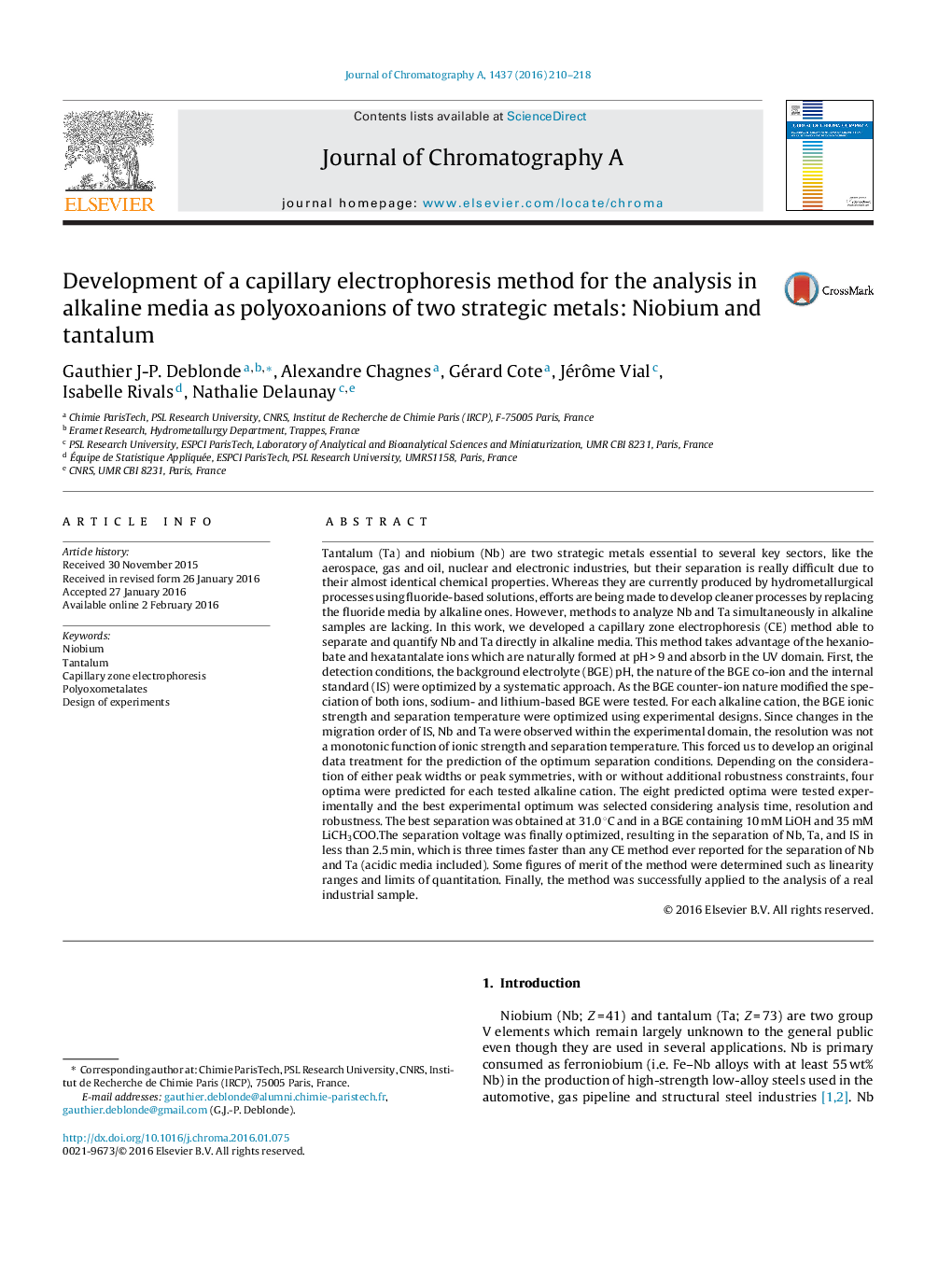| کد مقاله | کد نشریه | سال انتشار | مقاله انگلیسی | نسخه تمام متن |
|---|---|---|---|---|
| 1198909 | 1493489 | 2016 | 9 صفحه PDF | دانلود رایگان |

• Nb and Ta are simultaneously analyzed in less than 2.5 min.
• Nb and Ta are separated by CE in alkaline media as polyoxometalates.
• Optimization of the method was performed using a non-conventional data treatment.
• The method does not require any chromophoric reagent for the detection of Nb and Ta.
Tantalum (Ta) and niobium (Nb) are two strategic metals essential to several key sectors, like the aerospace, gas and oil, nuclear and electronic industries, but their separation is really difficult due to their almost identical chemical properties. Whereas they are currently produced by hydrometallurgical processes using fluoride-based solutions, efforts are being made to develop cleaner processes by replacing the fluoride media by alkaline ones. However, methods to analyze Nb and Ta simultaneously in alkaline samples are lacking. In this work, we developed a capillary zone electrophoresis (CE) method able to separate and quantify Nb and Ta directly in alkaline media. This method takes advantage of the hexaniobate and hexatantalate ions which are naturally formed at pH > 9 and absorb in the UV domain. First, the detection conditions, the background electrolyte (BGE) pH, the nature of the BGE co-ion and the internal standard (IS) were optimized by a systematic approach. As the BGE counter-ion nature modified the speciation of both ions, sodium- and lithium-based BGE were tested. For each alkaline cation, the BGE ionic strength and separation temperature were optimized using experimental designs. Since changes in the migration order of IS, Nb and Ta were observed within the experimental domain, the resolution was not a monotonic function of ionic strength and separation temperature. This forced us to develop an original data treatment for the prediction of the optimum separation conditions. Depending on the consideration of either peak widths or peak symmetries, with or without additional robustness constraints, four optima were predicted for each tested alkaline cation. The eight predicted optima were tested experimentally and the best experimental optimum was selected considering analysis time, resolution and robustness. The best separation was obtained at 31.0 °C and in a BGE containing 10 mM LiOH and 35 mM LiCH3COO.The separation voltage was finally optimized, resulting in the separation of Nb, Ta, and IS in less than 2.5 min, which is three times faster than any CE method ever reported for the separation of Nb and Ta (acidic media included). Some figures of merit of the method were determined such as linearity ranges and limits of quantitation. Finally, the method was successfully applied to the analysis of a real industrial sample.
Journal: Journal of Chromatography A - Volume 1437, 11 March 2016, Pages 210–218